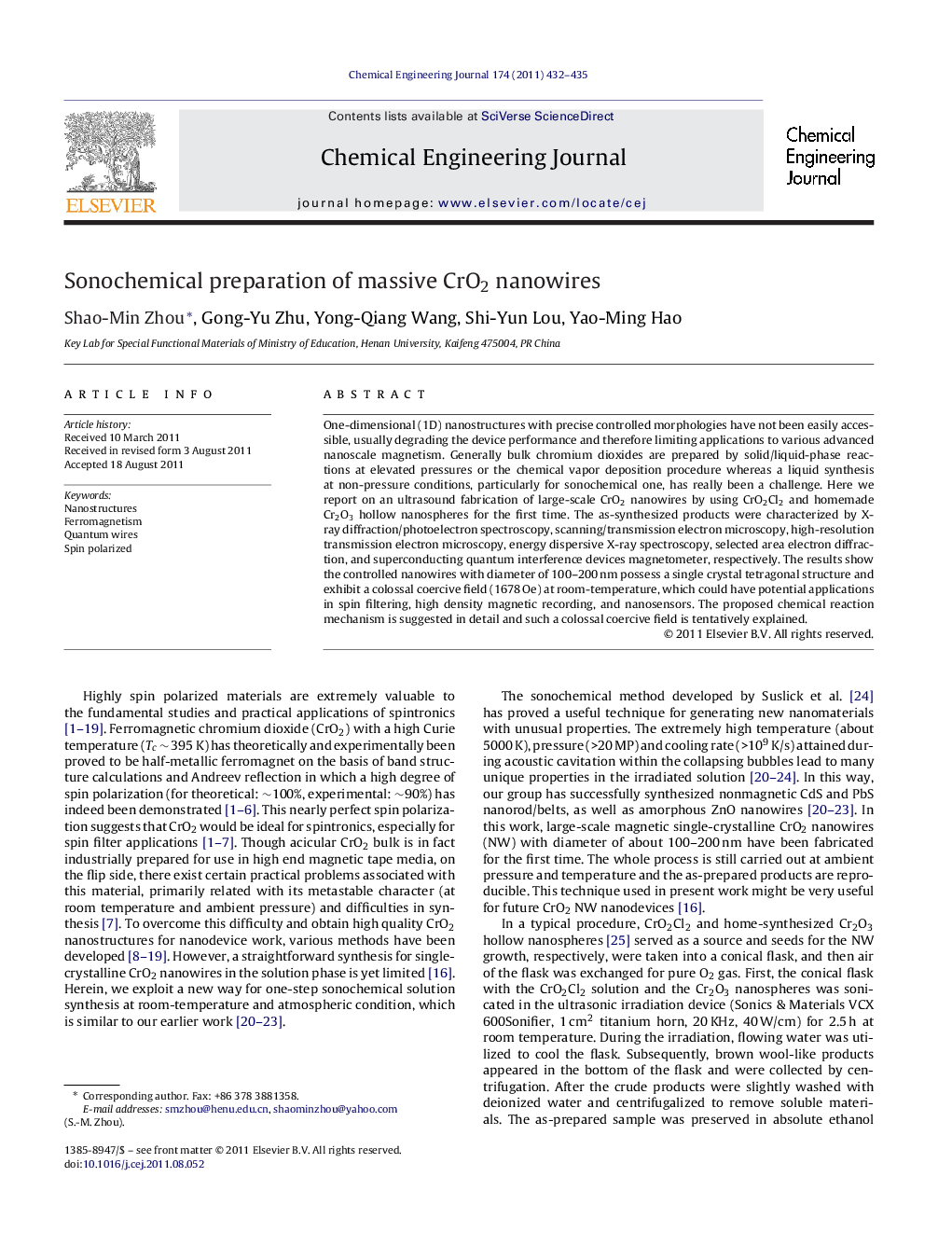| Article ID | Journal | Published Year | Pages | File Type |
|---|---|---|---|---|
| 150554 | Chemical Engineering Journal | 2011 | 4 Pages |
One-dimensional (1D) nanostructures with precise controlled morphologies have not been easily accessible, usually degrading the device performance and therefore limiting applications to various advanced nanoscale magnetism. Generally bulk chromium dioxides are prepared by solid/liquid-phase reactions at elevated pressures or the chemical vapor deposition procedure whereas a liquid synthesis at non-pressure conditions, particularly for sonochemical one, has really been a challenge. Here we report on an ultrasound fabrication of large-scale CrO2 nanowires by using CrO2Cl2 and homemade Cr2O3 hollow nanospheres for the first time. The as-synthesized products were characterized by X-ray diffraction/photoelectron spectroscopy, scanning/transmission electron microscopy, high-resolution transmission electron microscopy, energy dispersive X-ray spectroscopy, selected area electron diffraction, and superconducting quantum interference devices magnetometer, respectively. The results show the controlled nanowires with diameter of 100–200 nm possess a single crystal tetragonal structure and exhibit a colossal coercive field (1678 Oe) at room-temperature, which could have potential applications in spin filtering, high density magnetic recording, and nanosensors. The proposed chemical reaction mechanism is suggested in detail and such a colossal coercive field is tentatively explained.
► CrO2Cl2 and homemade Cr2O3 hollow nanospheres as reactive precursors. ► Ultrasound fabrication by a liquid synthesis at non-pressure conditions. ► Large-scale CrO2 nanowires are made. ► A colossal coercive field (1678 Oe) at room-temperature appears.
